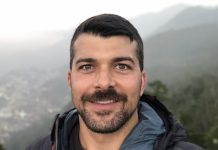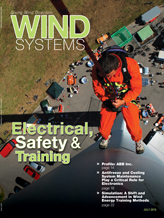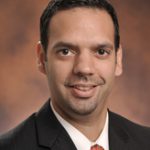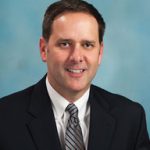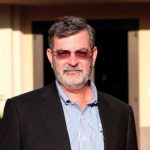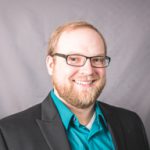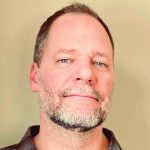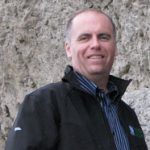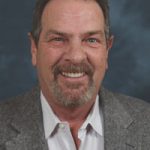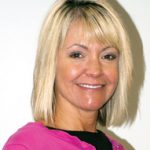Please give us some history on Abaris Training Resources Inc., including how it became involved in the wind energy industry.
Abaris started as a composite prototype and training company in 1983 with a group of former Lear Fan employees that had significant knowledge of advanced composite materials and processes. At the time, Abaris offered one composite repair course, serving mostly United States Department of Defense customers. In 1989, Abaris Training Resources Inc. was formed as a stand-alone company, and, over the years, it added many different composite courses that included engineering, manufacturing, and repair-related subjects to meet the demands of many different industries, including the wind energy sector. We currently offer 26 courses total.
How did you get involved in this market?
In the late 1990s, as wind turbine blades became larger and more efficient, the repairs needed on them became more critical, both from an aerodynamic and aeroelastic structural point of view. The OEMs had little expertise in the area of structural repairs, and Abaris began transferring knowledge from the aerospace industry to the wind energy marketplace.
Tell us about the various training and consulting services Abaris offers the wind energy industry.
Abaris currently has both engineering and technician level training for the wind energy industry. For up-tower repair technicians, Abaris offers a five-day course titled Composite Windblade Repair, wherein the students are actively introduced to structural repair methods and techniques that can be adapted to any composite turbine blade design. For engineers, Abaris offers a five-day course titled Structural Engineering for Composite Repair, in which engineers learn how to analyze the structure as well as the damage done to the structure and develop an appropriate repair design for the affected zones of the blade structure. In addition to these and many related courses, Abaris also offers both technical and engineering consultation to customers that may have specific requirements within their organization that go beyond the scope of their current internal knowledge base.
Tell us about the importance of producing high-performance structural repairs and how that is critical to the durability and efficiency of the wind turbine blade.
As the size of turbine blades increase and the designs further optimize the use of both glass and carbon fiber reinforcements to carry more load, the demand for aerospace quality repairs become more commonplace. The old-school repairs that originally emerged from the marine industry are no longer efficient in meeting the demands of repairs to today’s turbine blade designs. A thorough understanding of the aerodynamic and aeroelastic structural requirements of the composite repair are critical to the blades’ performance and are designed to prolong the life of the blade.
What sets technicians who are trained through Abaris apart from other technicians in the field?
At Abaris, we use an active learning/training approach with our students so that they learn about how composite materials work within the structure and why each step in the repair process may be critical to the end result. We spend just enough time in the classroom discussing the basics and the rest of the time in the workshop conducting actual repairs on different areas of blade sections to gain the knowledge and experience needed to competently perform high-quality field repairs. Oftentimes, a maintenance organization will send an entire group to our class, or a series of classes, to get everybody on the same page, thus providing consistency amongst their repair teams out in the field. This can only be accomplished in a formal training environment and not through on-the-job training efforts where many lessons and techniques are lost in the transfer of information from tech to tech.
What is laser shearography, and how can the wind power industry benefit from its application in blade inspections?
Laser shearography is a non-destructive inspection (NDI) technique that measures the material response to an applied stress, which can be either pressure, temperature, or load change. Using a high-power single frequency laser with powerful image capture and analysis tools, laser shearograms can produce a visual, micro-scale map of a surface that will show underlying disbonds, delaminations, and more in or around a defective or damaged area on the blade. It is very effective in finding a number of flaws in composite structures.
What are some of the challenges repair technicians face in the wind industry?
Up-tower technicians have a number of challenges, primarily the environmental conditions in which they work. Whether on a rope or a platform, just gaining the stability to perform damage assessment and repairs can be a challenge on a windy day. It is assumed that technicians coming to our facility are gaining rope or tower training separately from the composite repair training that we offer. Having said that, we teach students to perform damage assessment and removal of structural damage in a timely manner so they can move forward to conducting the repair. In our facility, we spend a great deal of time teaching the technicians how to organize materials that will be needed for the repair. This involves the use of trace templates for each repair ply and core materials that, if applicable, can be sent to a ground crew to prepare the repair pieces and send back up-tower as needed. Much of the challenge is in handling and, eventually, curing the resin-impregnated fabric layers that are used to replace the axially oriented materials in the tapered scarf or otherwise prepared area so that the loads are regained in the laminate repair. This work is often done with a vacuum bag and, perhaps, a heater blanket and process controller. Abaris technicians learn to coordinate and prepare for each step, so as to minimize the time between resin impregnation, vacuum bagging, and curing the resin system.
What is a repair plan, and why is it such a critical step in the composites repair and inspection process on wind turbine blades?
A repair plan may be a generic set of instructions applicable to a certain type and size of damage for various zones on the blade. If the damage is large and complex, the repair instruction may require an engineering analysis of the damage and a specific repair be developed to achieve the desired aerodynamic and/or aeroelastic structural properties. Post repair inspection of the repair often will be required in the instruction as a review of photo documentation of step-by-step procedures, vacuum readings, process controller data, and some sort of NDI to verify the repair is sound. The bottom line is that having a repair instruction, plan, or checklist for any type of repair provides for consistency and reliability from one repair to another.
What are the advantages of working with Abaris?
The biggest advantage is learning from our many years of experience with advanced composite materials, processes, methods, techniques, and best practices that our staff has acquired over years of service to multiple industries. Abaris can pass on knowledge in a matter of days that might take years for others to acquire.
What sets Abaris apart from other training and consultation providers in the wind energy market?
Abaris has the longest and most successful track record in the business of advanced composite training than any other company on the globe. This experience spans multiple industries and has been uniquely applied to the wind energy market in establishing best methods and practices for wind blade engineering, manufacturing, and repairs.
What can the industry expect from Abaris moving forward?
Abaris will continuously improve our offerings based upon newly reported knowledge of new technologies, materials, processes, and designs affecting the wind energy industry. Our goal is to stay ahead of the status quo with our engineering and technical expertise.
![]() (971) 261-2053
(971) 261-2053
![]() training@abaris.com
training@abaris.com
![]() www.abaris.com
www.abaris.com
![]() /AbarisTraining
/AbarisTraining

















